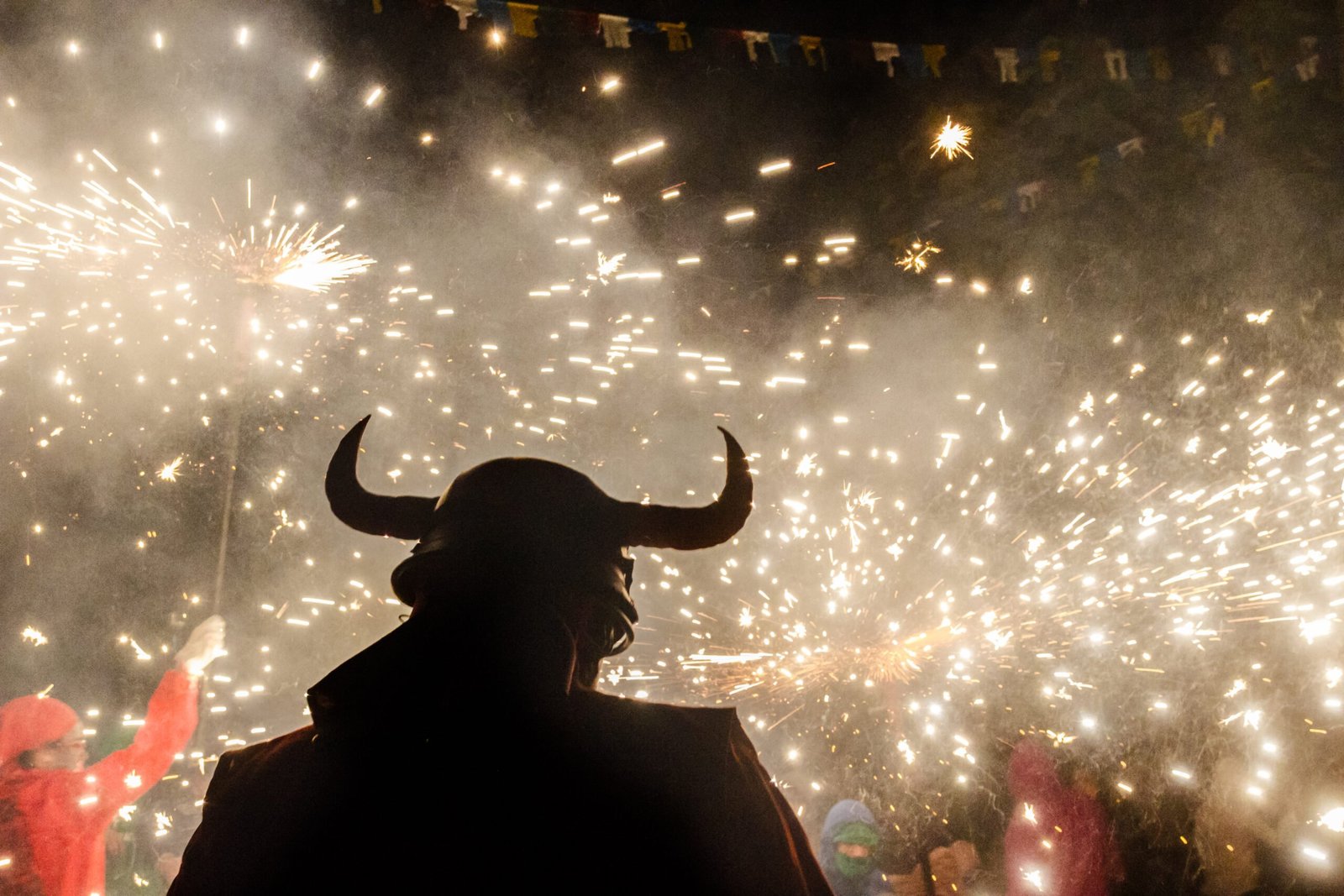Sant Antoni is arguably the biggest and most important holiday unique to Mallorca. Despite having just finished Christmas not two weeks before, Mallorcans hit the streets and squares again. The trains run late into the night. Demons run wild in the street.
With the Feast of Sant Antoni taking place on January 17 and most of the festivities happening the night before on the 16th, Sant Antoni is fundamental to Mallorcan culture. It’s even the origin of the Mallorcan soccer team’s mascot: Demons.
There’s no better way to experience Mallorcan culture than celebrating Sant Antoni with the people, so here’s your guide on how to do just that. That’s why we could not miss it at Mallorqueta.
The Origins of Sant Antoni
Saint Anthony was a Christian monk who lived in Egypt in the Third Century. He became revered because he lived an ascetic lifestyle as a swineherd, forgoing earthly pleasures in favor of devotion to God. As the story goes, he was frequently tempted and even attacked by demons in the desert where he lived. He was able to resist them through the power of prayer. He became an example for future ascetics, thus earning him the title of “Father of Monks.”
Because Saint Anthony is the patron saint of animals and farmers, many rural towns in Mallorca such as Sa Pobla and Manacor adopted him as their patron saint. As early as the Middle Ages, farmers would bring their animals into town for the local priest to bless them, a tradition known as Beneïdes that still continues to this day.
Eventually, this came to involve an entire festival since many would gather in the town the night before. Naturally, the celebration had to involve the demons that play such a prominent role in the story of Saint Anthony. As these became more and more popular around the island, demons came to take part in many Mallorcan celebrations and represent the island itself. Still, they ultimately trace their roots back to the story of Sant Antoni.
Typical Sant Antoni Traditions
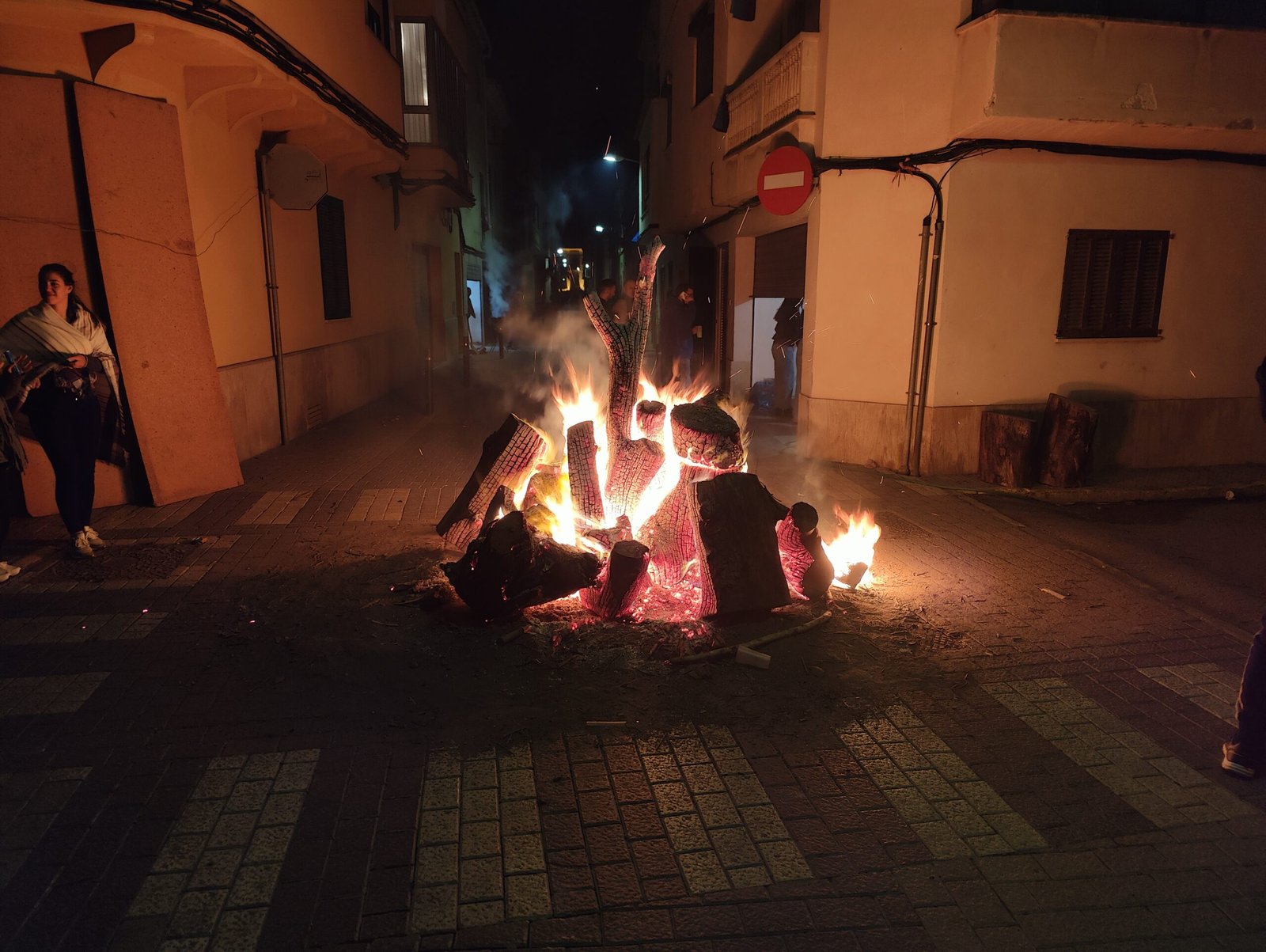
Foguerons
Fugueron basically means “bonfire” in Catalan. On the eve of Sant Antoni, that is to the say, the night of January 16, groups of neighbors, local organizations, schools, town halls, etc., even in towns that don’t officially have a bank holiday for Sant Antoni, build large bonfires in the streets and squares.
While some of these are private, most welcome anyone to come barbecue their own food, normally bread with sobrassada and botifarró, on the fire and socialize.
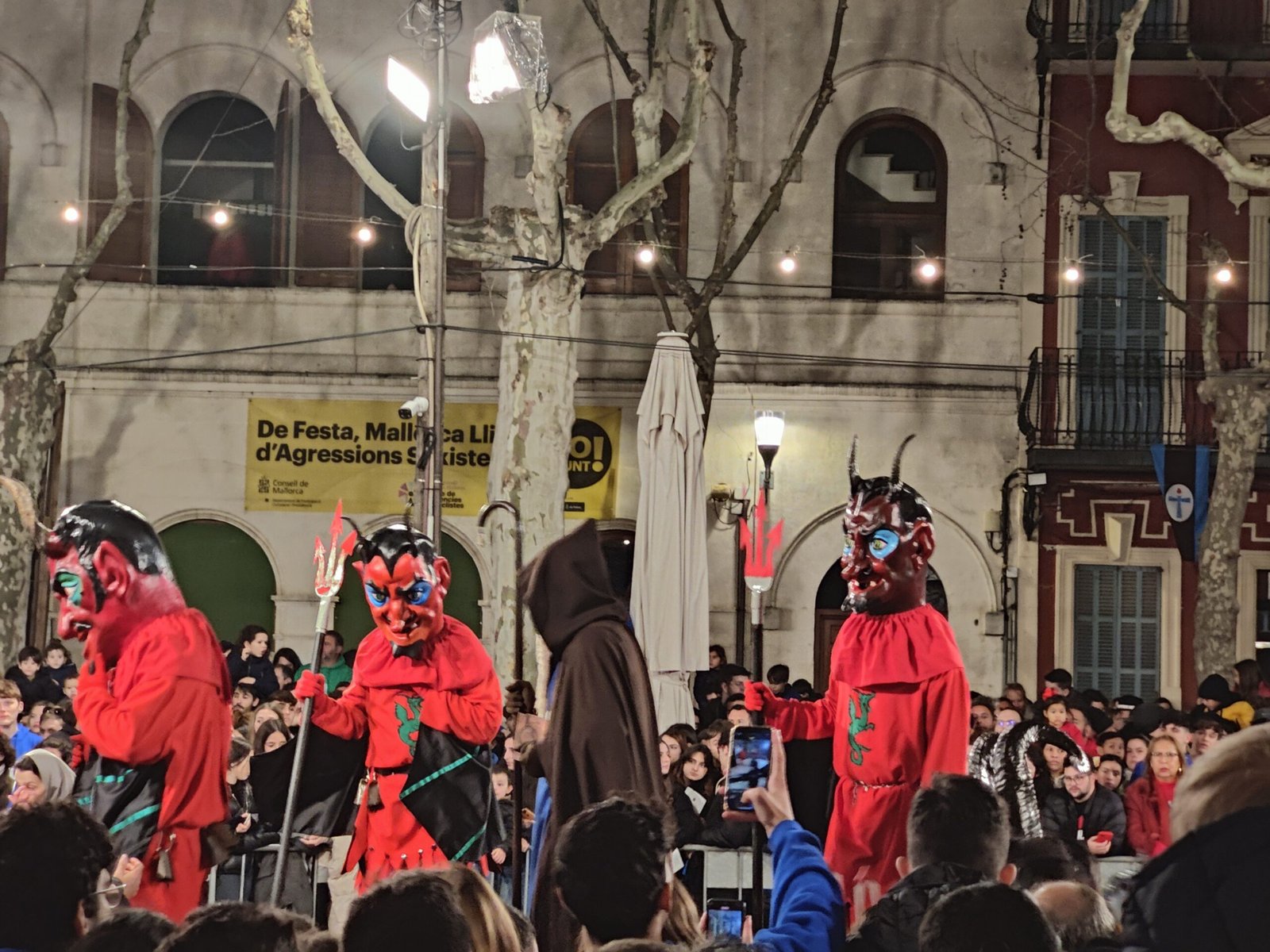

Dimonis
Demons are widely associated with Mallorca in general, but they originated with the Feast of Sant Antoni since Saint Anthony was tempted by demons in the wilderness. On the night of January 16, many people dress up as demons and run around town with pitchforks, making noise and sometimes spinning correfocs.
Important to note, each town in Mallorca has their own design of demon suit. Oftentimes, a town’s demon will have a name and be like a mascot for the town. These are often pictured on t-shirts and posters.
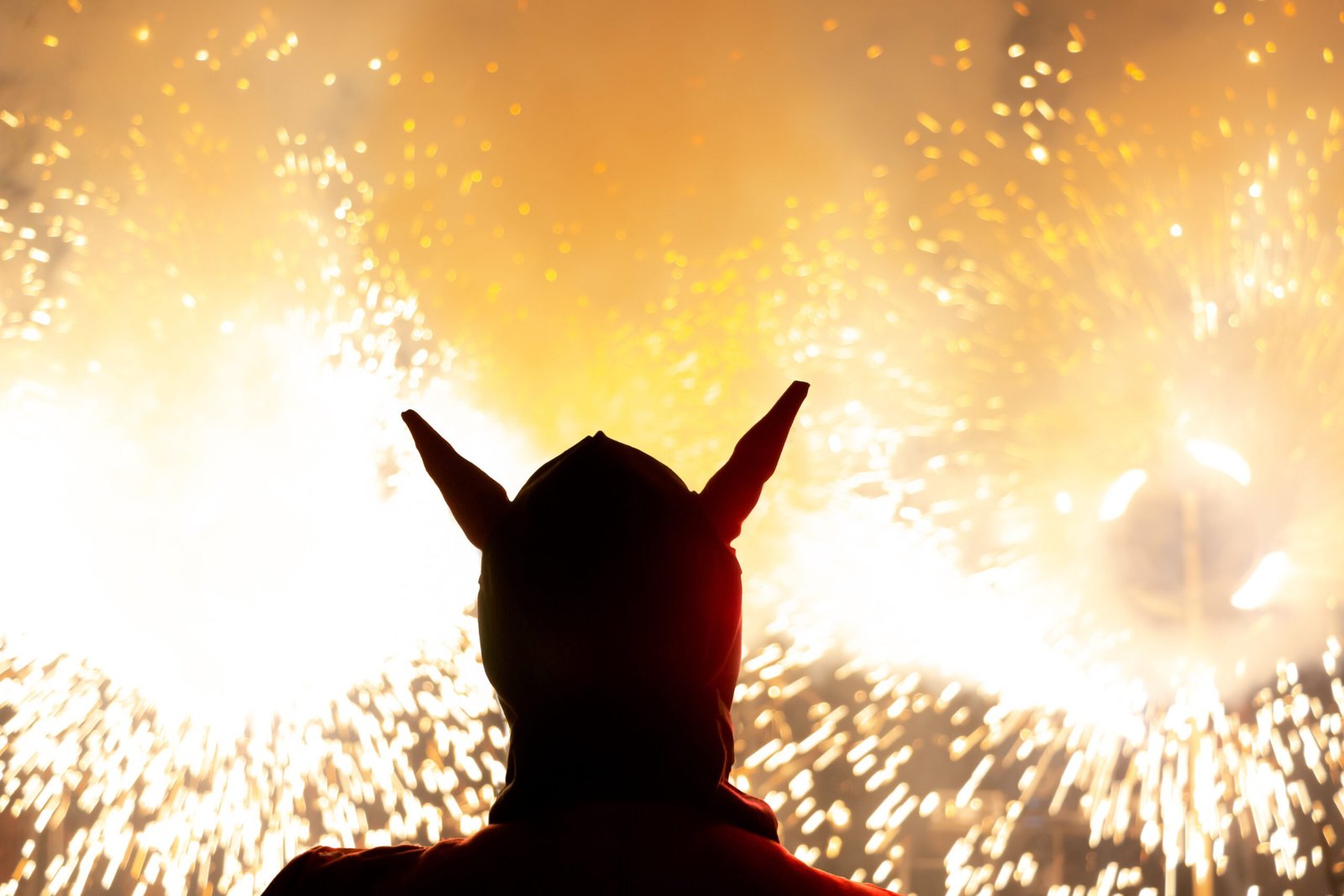

Correfocs
A carrefoc is like a giant firework sparkler. Really, it’s several sparkers attached to a poll, which festival-goers, usually those dressed as demons, spin around in a loud and brilliant display.
Espinagades
An espinagada is like an empanada of pork or eel along with various vegetables. In Sa Pobla, they’re made in large batches for Sant Antoni and sold on the street.
Gigants and Caparots
Giants and caparots, the big heads, are a major part of Mallorcan culture, so it’s no surprise they show their faces on Sant Antoni. This is far from the only time they come out, but towns with major Sant Antoni festivities like Sa Pobla have events that include gigants and caparots dancing and parading.
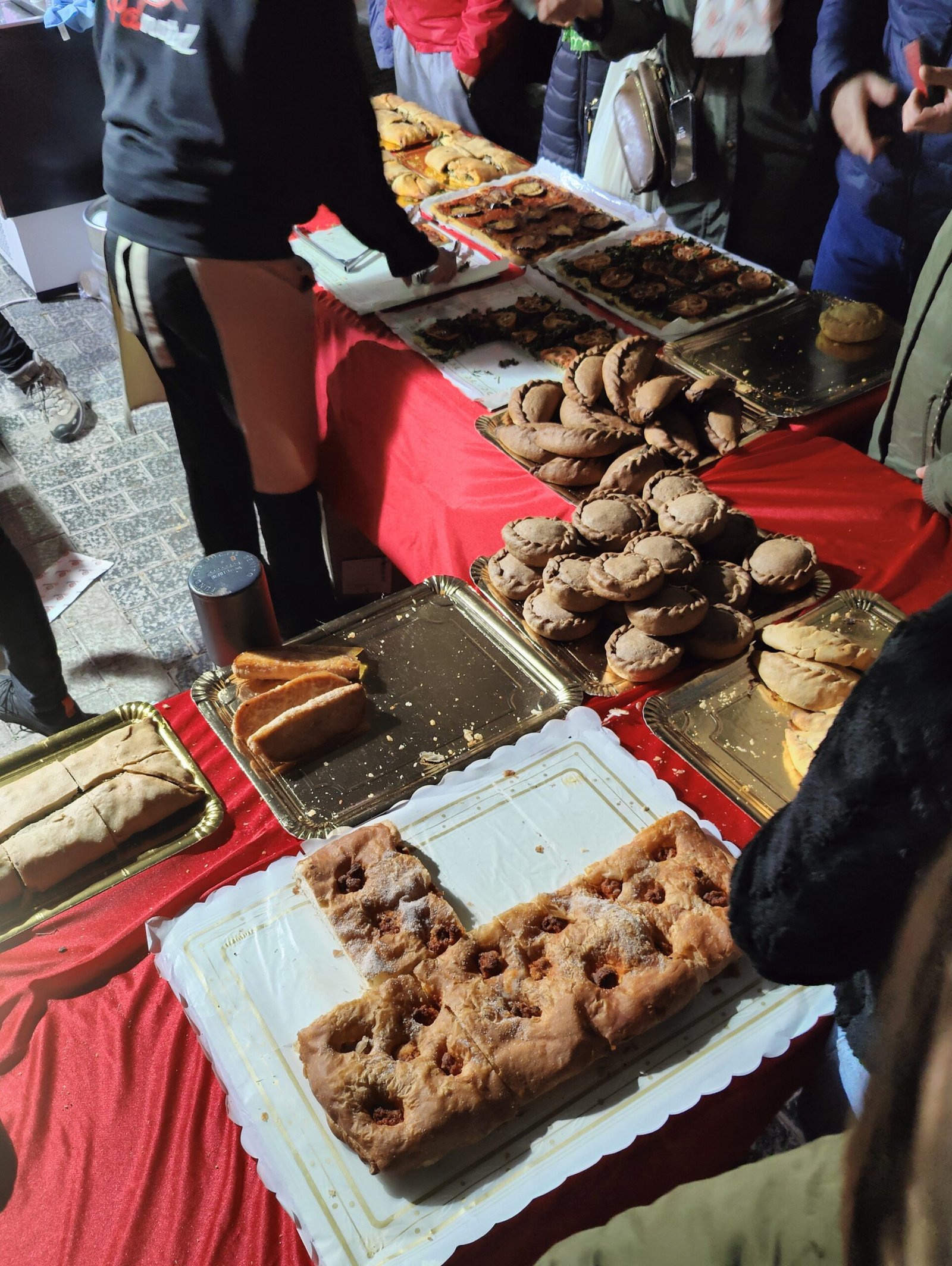

U Pi de Pollença
The town of Pollença has a particularly interesting tradition, though it takes place on the 17th itself rather than the night of the 16th. A tall pine tree trunk with the branches and bark stripped off is placed in the center of the town square. It measures between 65 and 80 feet (20-24 meters). Starting at 2 pm, young people, usually men, attempt to climb up the trunk to reach a rooster with a bag of confetti placed at the top.
Beneïdes
The Beneïdes take place on January 17 itself. Farmers bring their animals into town to the local church to have them blessed by the priest since Saint Anthony is the patron saint of animals and farmers.
Where Do They Celebrate Sant Antoni?
Because Palma celebrates their patron saint Sant Sebastià the same week, Sant Antoni celebrations are less common there. It’s mostly a holiday in the other Mallorcan towns outside of the city. Even in towns where Sant Antoni isn’t the patron saint and January 17 isn’t a bank holiday, the people still celebrate the night of the 16th with foguerons and dimonis.
Nevertheless, the places with the biggest celebrations are also those where Sant Antoni is the town’s patron saint and it’s an official holiday on the 17th. These include:
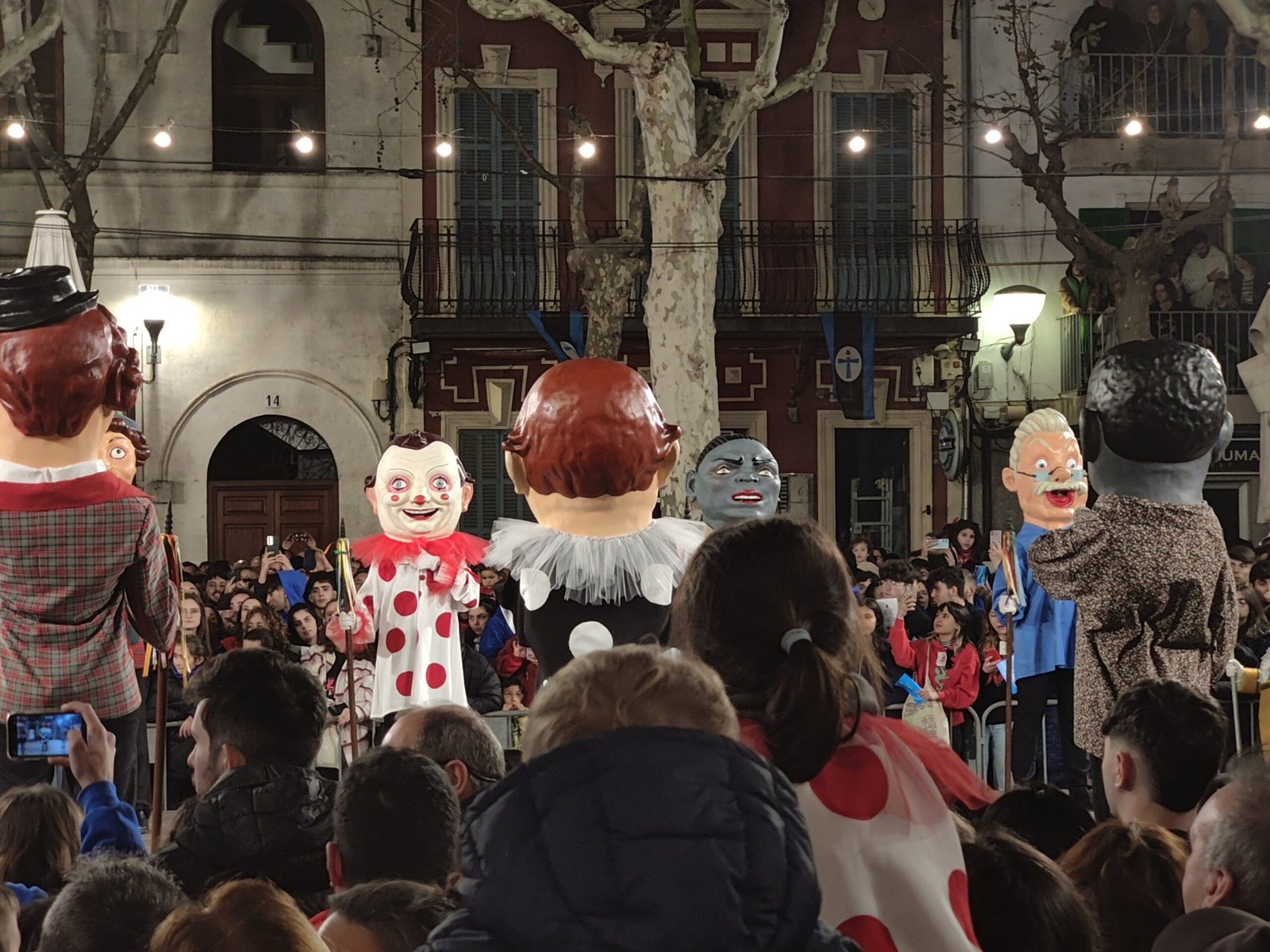

Sant Antoni 2023
I always recommend going to Sa Pobla on the night of the 16th, which is Monday this year. There are events basically all day on the 16th and 17th, but most exciting parts including the foguerons, demons and fireworks start at about 9 pm. The entire schedule can be found on the Sa Pobla town hall’s website and in the embedded PDF below, but here are the main events:
| Event | Time, Date | Place |
| Dance of the dimonis, caparrots and gigants | 9:15 pm, Jan 16 | Plaça Major, Sa Pobla |
| Fireworks show and music | 9:45 pm, Jan 16 | Plaça Major, Sa Pobla |
| Ximbombada and Glosada | 12:30 am, Jan 17 | Plaça Major and Plaça d’Alexandre, Sa Pobla |
| Beneïdes, blessing of the animals | 4:30 pm, Jan 17 | Sa Pobla church |
TIB has also stated that they will run trains between Manacor and Sa Pobla throughout the night of the 16th to assist people traveling to and from the festivities.

